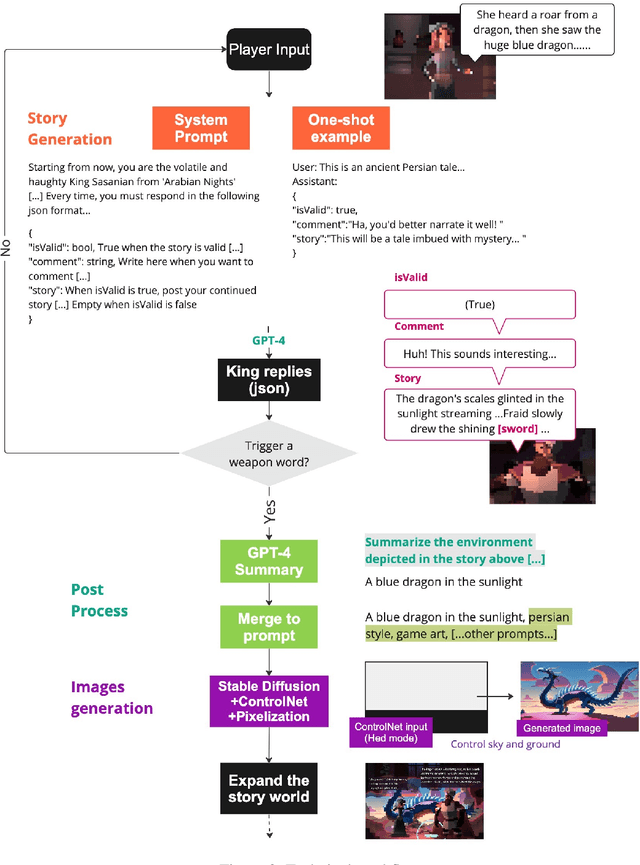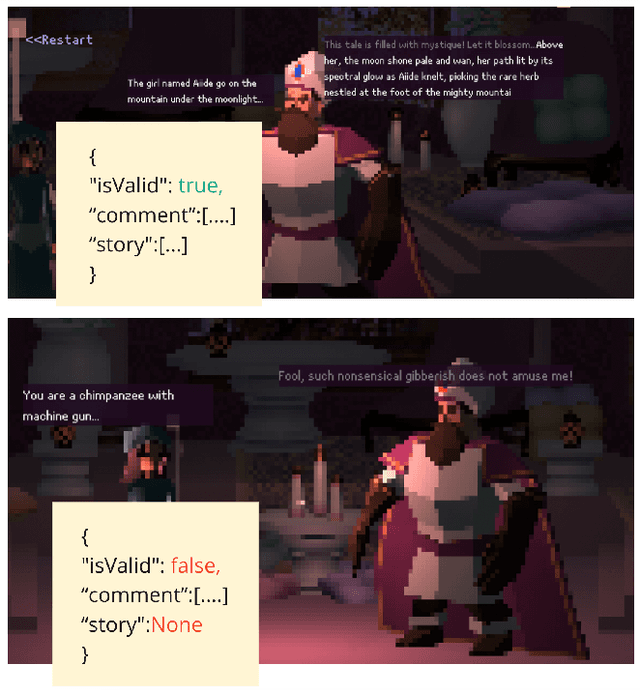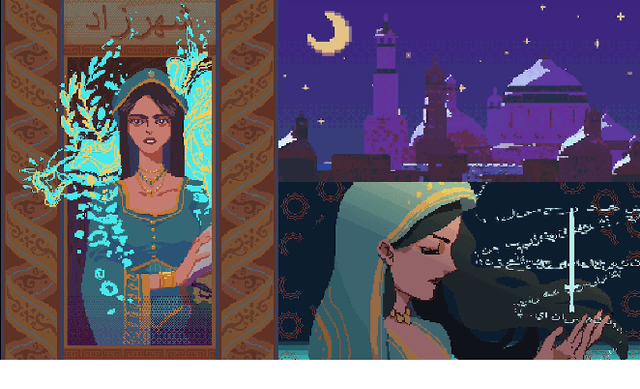Chang Hee Lee
ORIBA: Exploring LLM-Driven Role-Play Chatbot as a Creativity Support Tool for Original Character Artists
Dec 14, 2025Abstract:Recent advances in Generative AI (GAI) have led to new opportunities for creativity support. However, this technology has raised ethical concerns in the visual artists community. This paper explores how GAI can assist visual artists in developing original characters (OCs) while respecting their creative agency. We present ORIBA, an AI chatbot leveraging large language models (LLMs) to enable artists to role-play with their OCs, focusing on conceptualization (e.g., backstories) while leaving exposition (visual creation) to creators. Through a study with 14 artists, we found ORIBA motivated artists' imaginative engagement, developing multidimensional attributes and stronger bonds with OCs that inspire their creative process. Our contributions include design insights for AI systems that develop from artists' perspectives, demonstrating how LLMs can support cross-modal creativity while preserving creative agency in OC art. This paper highlights the potential of GAI as a neutral, non-visual support that strengthens existing creative practice, without infringing artistic exposition.
AI Nushu: An Exploration of Language Emergence in Sisterhood -Through the Lens of Computational Linguistics
Oct 18, 2023Abstract:This paper presents "AI Nushu," an emerging language system inspired by Nushu (women's scripts), the unique language created and used exclusively by ancient Chinese women who were thought to be illiterate under a patriarchal society. In this interactive installation, two artificial intelligence (AI) agents are trained in the Chinese dictionary and the Nushu corpus. By continually observing their environment and communicating, these agents collaborate towards creating a standard writing system to encode Chinese. It offers an artistic interpretation of the creation of a non-western script from a computational linguistics perspective, integrating AI technology with Chinese cultural heritage and a feminist viewpoint.
Fictional Worlds, Real Connections: Developing Community Storytelling Social Chatbots through LLMs
Sep 20, 2023Abstract:We address the integration of storytelling and Large Language Models (LLMs) to develop engaging and believable Social Chatbots (SCs) in community settings. Motivated by the potential of fictional characters to enhance social interactions, we introduce Storytelling Social Chatbots (SSCs) and the concept of story engineering to transform fictional game characters into "live" social entities within player communities. Our story engineering process includes three steps: (1) Character and story creation, defining the SC's personality and worldview, (2) Presenting Live Stories to the Community, allowing the SC to recount challenges and seek suggestions, and (3) Communication with community members, enabling interaction between the SC and users. We employed the LLM GPT-3 to drive our SSC prototypes, "David" and "Catherine," and evaluated their performance in an online gaming community, "DE (Alias)," on Discord. Our mixed-method analysis, based on questionnaires (N=15) and interviews (N=8) with community members, reveals that storytelling significantly enhances the engagement and believability of SCs in community settings.
Language as Reality: A Co-Creative Storytelling Game Experience in 1001 Nights using Generative AI
Aug 24, 2023



Abstract:In this paper, we present "1001 Nights", an AI-native game that allows players lead in-game reality through co-created storytelling with the character driven by large language model. The concept is inspired by Wittgenstein's idea of the limits of one's world being determined by the bounds of their language. Using advanced AI tools like GPT-4 and Stable Diffusion, the second iteration of the game enables the protagonist, Shahrzad, to realize words and stories in her world. The player can steer the conversation with the AI King towards specific keywords, which then become battle equipment in the game. This blend of interactive narrative and text-to-image transformation challenges the conventional border between the game world and reality through a dual perspective. We focus on Shahrzad, who seeks to alter her fate compared to the original folklore, and the player, who collaborates with AI to craft narratives and shape the game world. We explore the technical and design elements of implementing such a game with an objective to enhance the narrative game genre with AI-generated content and to delve into AI-native gameplay possibilities.
 Add to Chrome
Add to Chrome Add to Firefox
Add to Firefox Add to Edge
Add to Edge